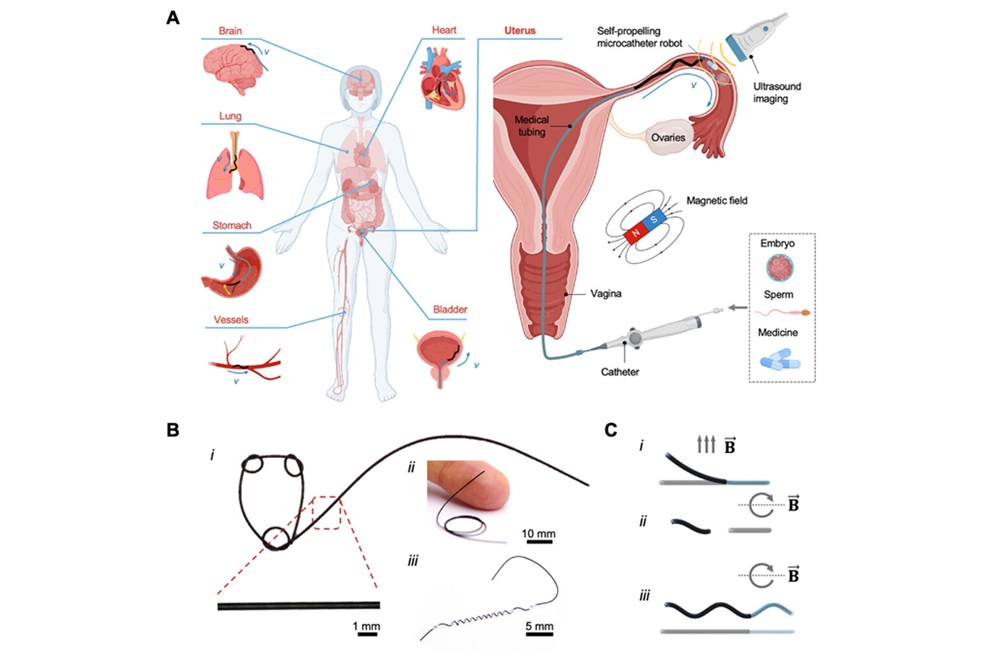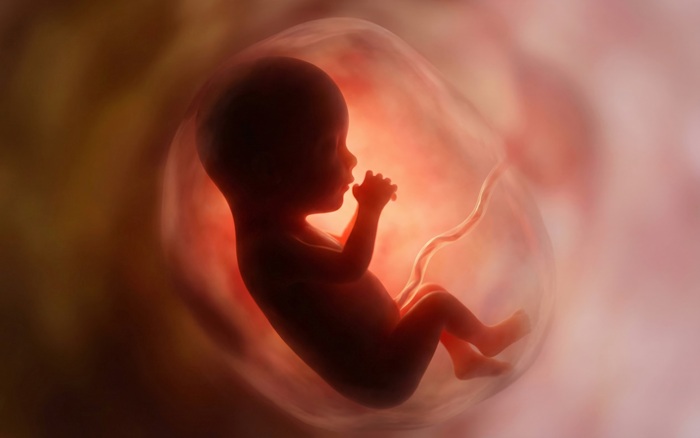Removal of Colon Polyps May Not Require Resection
|
By HospiMedica International staff writers Posted on 30 Jun 2014 |
Laparoscopic-assisted colonoscopic polypectomy (LACP) of benign polyps requires fewer resources and is just as effective as a partial colon resection.
Researchers at Stony Brook University (SBU; NY, USA) conducted a randomized study involving 34 patients with benign right-sided polyps to undergo either LACP or laparoscopic hemicolectomy (LHC). The two groups were similar in age and gender distribution, average body mass index (BMI), American Society of Anesthesiologists (ASA) class, and history of previous abdominal surgery; polyp morphology, location, size, and histology were also similar between the two groups.
The researchers found that they were able to remove polyps in 92.9% of patients assigned to LACP, with one patient requiring conversion to LHC. In the group randomized to LHC, four patients required conversion to open laparotomy. The study also found that LACP required less time than LHC (95 vs. 179 minutes), and LACP patients lost less blood (13 vs. 63 mL). LACP patients also required less intravenous (IV) fluids, took less time to pass flatus, resumed solid food intake sooner postoperatively, and were discharged earlier.
Rates of postoperative complications, hospital readmissions, and reoperations were similar among the two groups. The researchers reported that the patients in the study will continue to undergo surveillance colonoscopies to determine whether there are any differences in their long-term outcomes. The study was presented at Digestive Disease Week (DDW), held during May 2014 in Chicago (IL, USA).
“Although LACP has clear benefits, adoption of the procedure has been slow. The biggest roadblock to performing LACP is the ability of a surgeon and gastroenterologist to coordinate their schedules,” said lead author Jonathan Buscaglia, MD, director of interventional endoscopy at SBU. “You need a good relationship between the two departments, and schedules that can accommodate being in the operating room at the same time. It’s not always the easiest thing to do.”
During LACP, surgeons use a laparoscope to mobilize the right colon to a position that will allow an endoscopist to reach, snare, and remove the benign polyps. The technique is easier to perform on the right side of the colon, since the left colon presents surgeons with several obstacles, including diverticulitis, scarring, and tight anatomy.
Related Links:
Stony Brook University
Researchers at Stony Brook University (SBU; NY, USA) conducted a randomized study involving 34 patients with benign right-sided polyps to undergo either LACP or laparoscopic hemicolectomy (LHC). The two groups were similar in age and gender distribution, average body mass index (BMI), American Society of Anesthesiologists (ASA) class, and history of previous abdominal surgery; polyp morphology, location, size, and histology were also similar between the two groups.
The researchers found that they were able to remove polyps in 92.9% of patients assigned to LACP, with one patient requiring conversion to LHC. In the group randomized to LHC, four patients required conversion to open laparotomy. The study also found that LACP required less time than LHC (95 vs. 179 minutes), and LACP patients lost less blood (13 vs. 63 mL). LACP patients also required less intravenous (IV) fluids, took less time to pass flatus, resumed solid food intake sooner postoperatively, and were discharged earlier.
Rates of postoperative complications, hospital readmissions, and reoperations were similar among the two groups. The researchers reported that the patients in the study will continue to undergo surveillance colonoscopies to determine whether there are any differences in their long-term outcomes. The study was presented at Digestive Disease Week (DDW), held during May 2014 in Chicago (IL, USA).
“Although LACP has clear benefits, adoption of the procedure has been slow. The biggest roadblock to performing LACP is the ability of a surgeon and gastroenterologist to coordinate their schedules,” said lead author Jonathan Buscaglia, MD, director of interventional endoscopy at SBU. “You need a good relationship between the two departments, and schedules that can accommodate being in the operating room at the same time. It’s not always the easiest thing to do.”
During LACP, surgeons use a laparoscope to mobilize the right colon to a position that will allow an endoscopist to reach, snare, and remove the benign polyps. The technique is easier to perform on the right side of the colon, since the left colon presents surgeons with several obstacles, including diverticulitis, scarring, and tight anatomy.
Related Links:
Stony Brook University
Latest Surgical Techniques News
- Catheter-Based Procedures Offer Less Invasive Option for Treatment of Valvular Disease
- Laparoscopic Surgery Improves Outcomes for Severe Newborn Liver Disease
- Novel Endoscopy Technique Provides Access to Deep Lung Tumors
- New Study Findings Could Halve Number of Stent Procedures
- Breakthrough Surgical Device Redefines Hip Arthroscopy
- Automated System Enables Real-Time "Molecular Pathology" During Cancer Surgery
- Groundbreaking Procedure Combines New Treatments for Liver Tumors
- Ablation Reduces Stroke Risk Associated with Atrial Fibrillation
- Optical Tracking Method Identifies Target Areas in Robot-Assisted Neurosurgery
- General Anesthesia Improves Post-Surgery Outcomes for Acute Stroke Patients
- Drug-Coated Balloons Can Replace Stents Even in Larger Coronary Arteries
- Magnetic Kidney Stone Retrieval Device Outperforms Ureteroscopic Laser Lithotripsy
- Absorbable Skull Device Could Replace Traditional Metal Implants Used After Brain Surgery
- Magic Silicone Liquid Powered Robots Perform MIS in Narrow Cavities
- 'Lab-on-a-Scalpel' Provides Real-Time Surgical Insights for POC Diagnostics in OR
- Biodegradable Brain Implant Prevents Glioblastoma Recurrence
Channels
Critical Care
view channel
Bioadhesive Strategy Prevents Fibrosis Around Device Implants on Peripheral Nerves
Peripheral nerves connect the brain and spinal cord to muscles, organs, and sensory systems, making them key targets for treating neurological and systemic diseases. However, implantable bioelectronic... Read more
Miniature Non-Invasive Robotic Catheters to Improve Infertility Treatments
Minimally invasive procedures in reproductive and gynaecological medicine are often limited by the difficulty of navigating narrow, delicate anatomical pathways without damaging surrounding tissue.... Read morePatient Care
view channel
Revolutionary Automatic IV-Line Flushing Device to Enhance Infusion Care
More than 80% of in-hospital patients receive intravenous (IV) therapy. Every dose of IV medicine delivered in a small volume (<250 mL) infusion bag should be followed by subsequent flushing to ensure... Read more
VR Training Tool Combats Contamination of Portable Medical Equipment
Healthcare-associated infections (HAIs) impact one in every 31 patients, cause nearly 100,000 deaths each year, and cost USD 28.4 billion in direct medical expenses. Notably, up to 75% of these infections... Read more
Portable Biosensor Platform to Reduce Hospital-Acquired Infections
Approximately 4 million patients in the European Union acquire healthcare-associated infections (HAIs) or nosocomial infections each year, with around 37,000 deaths directly resulting from these infections,... Read moreFirst-Of-Its-Kind Portable Germicidal Light Technology Disinfects High-Touch Clinical Surfaces in Seconds
Reducing healthcare-acquired infections (HAIs) remains a pressing issue within global healthcare systems. In the United States alone, 1.7 million patients contract HAIs annually, leading to approximately... Read moreHealth IT
view channel
EMR-Based Tool Predicts Graft Failure After Kidney Transplant
Kidney transplantation offers patients with end-stage kidney disease longer survival and better quality of life than dialysis, yet graft failure remains a major challenge. Although a successful transplant... Read more
Printable Molecule-Selective Nanoparticles Enable Mass Production of Wearable Biosensors
The future of medicine is likely to focus on the personalization of healthcare—understanding exactly what an individual requires and delivering the appropriate combination of nutrients, metabolites, and... Read moreBusiness
view channel
Philips and Masimo Partner to Advance Patient Monitoring Measurement Technologies
Royal Philips (Amsterdam, Netherlands) and Masimo (Irvine, California, USA) have renewed their multi-year strategic collaboration, combining Philips’ expertise in patient monitoring with Masimo’s noninvasive... Read more
B. Braun Acquires Digital Microsurgery Company True Digital Surgery
The high-end microsurgery market in neurosurgery, spine, and ENT is undergoing a significant transformation. Traditional analog microscopes are giving way to digital exoscopes, which provide improved visualization,... Read more
CMEF 2025 to Promote Holistic and High-Quality Development of Medical and Health Industry
The 92nd China International Medical Equipment Fair (CMEF 2025) Autumn Exhibition is scheduled to be held from September 26 to 29 at the China Import and Export Fair Complex (Canton Fair Complex) in Guangzhou.... Read more















